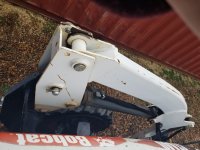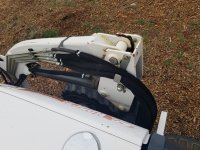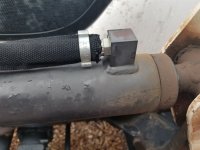Howdy all,
I'm not sure what's going on. I have a Bobcat CT440 (Hydro) with the 9TL FEL. It has between 700-750 hours on it, I bought it used in June of 2020 with 604 hours on it. I have not used it since November, we've only had one week with a few days of hard freezing this year (in January). It was about 60 degrees yesterday when this happened.
Yesterday I started the tractor up, lifted the forks and rear brush hog in order to drive, and drove it about 100 feet - nothing is wrong yet. I picked up one of those plastic Keter storage sheds on a pallet (the box says it weighs 110lbs.), turned around, and moved it about 20 feet before setting it down. I'm not sure when in this operation it started, but both of my lift cylinders began spewing fluid. Once I parked the tractor, set down the forks, and shut it off, it was still leaking (I assume while the pressure went down). I pushed the joystick down after shutting it off, but didn't go side to side.
I did look in the manual and it said to warm it up for 5 minutes before lifting the front or rear, I'm pretty sure from start to shutdown wasn't even 10 minutes. Sorry.
Have the seals on my lift cylinders blown at exactly the same time? Bobcat wants $150 per kit, does anyone know of another option? Should I DIY or take it somewhere, I have the service manual and it doesn't cover the FEL at all, so I'll be not only doing this for the first time ever, but with no instructions.
FWIW - I'm a woman and a decent vehicle mechanic, but I know nothing of diesel engines or hydraulics (or tractors). I'm also concerned I might not have the physical strength to get the dumb things off the tractor, but I do have a friend with a shop that can help rebuild them. I appreciate any ideas or advice (like what to cover the hoses/holes with, how not to drink fluid, how to bleed the system after install, etc.).
Also, is it okay to add makeup fluid like Delvac or should I buy OEM?
The serial is AE3500XXX.
Thanks.



